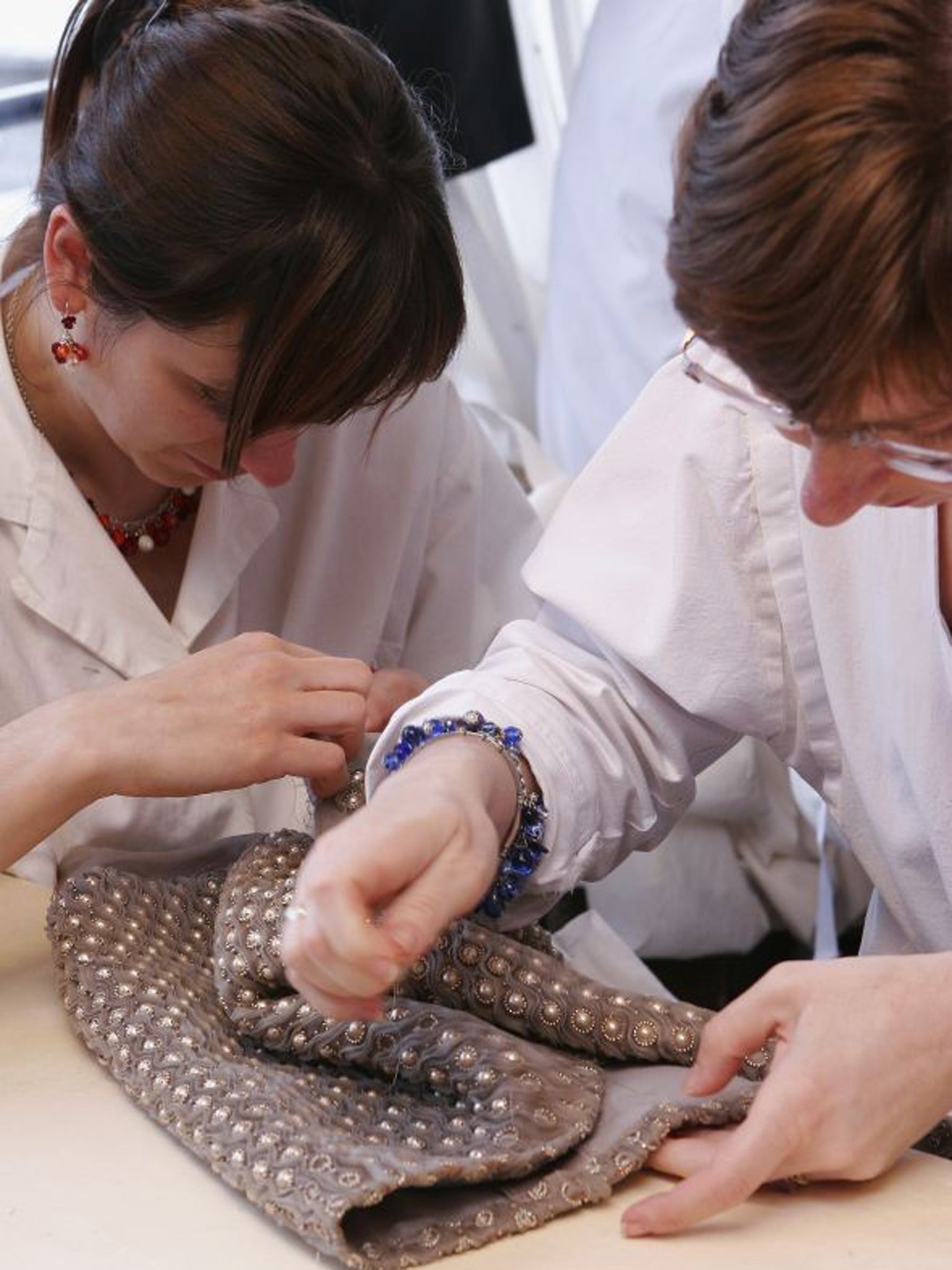Alexander Fury: Looking good and feeling great - that’s why fashion’s worth it
Wear, what, why, when? 'Great fashion is worth more than just the cloth that it’s stitched from'

Cost and worth. Two words that come up time and time again when discussing fashion. How much does it cost? How much is it worth? Scratch the latter; the more usual declaration is: “It’s not worth that!”
It’s spouting at everything with a hefty price tag, from three-figure Prada clodhoppers to four-figure Saint Laurent babydolls, to the highest echelons of haute couture (the only figures that matter there are the clients).
The cost of couture is directly proportionate to the fabrics and labour involved (pictured). That’s the case with most fashion. Manufacturing a garment in Italy from silk costs more than a sweatshop stitching polyamide and nylon. You don’t have to be Marx to figure that out.
But man-hours and materials aren’t everything. In the same way that a painting is worth more than the cost of canvas and oil, great fashion is worth more than just the cloth it’s stitched from. You’re paying for the design, the mind behind it.
I loathe people calling fashion art, though. Food is an easier comparison – because, like eating, we all have to dress. I’m consistently astounded that the simple précis behind the cost of organic food – higher quality, more humane, and therefore better – doesn’t impact mass perception of fashion. The idea of a television chef extolling the virtues of supermarket-value mincemeat and GM vegetables over organic is laughable. But that’s exactly what the “celebrity” stylist likes of Gok Wan do, implying that one jacket is better than another merely because it’s cheaper.
My objection is that this reduces fashion to pure visual. Fashion isn’t visual; it’s sensual. Cashmere versus polyamide. Rei Kawakubo originally refused to place mirrors in the changing rooms of her Comme des Garçons shops because she wanted wearers to focus on the tactile rather than the visual. It didn’t work because customers couldn’t divorce the look from the feel. Nor can I.
Subscribe to Independent Premium to bookmark this article
Want to bookmark your favourite articles and stories to read or reference later? Start your Independent Premium subscription today.

Join our commenting forum
Join thought-provoking conversations, follow other Independent readers and see their replies